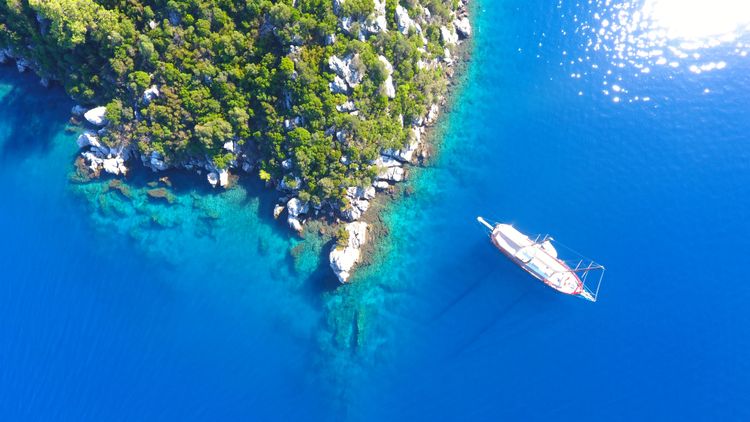Some archaeological sites can be a little austere, looking a bit like each other, especially if you're not a specialist in old stones or antiquity... Nothing like that with Nemrut Dagi: the site is quite simply grandiose. And that's a good thing, because you'll have to travel miles and miles into eastern Turkey to find the incredible mausoleum of King Antiochos I of Commagene.
While the west of Turkey, from Istanbul to the Turkish Riviera via the Aegean coast, remains the area of choice for holidaymakers, the eastern part of the country is for the more adventurous traveller. They will be rewarded with incredible scenery, with an exceptional archaeological site in their sights, the Nemrut Dagi.
Even further afield than Cappadocia, we enter deepest Turkey, between mountains and high desert plateaux, until we reach the cut through Anatolia made by the course of the Euphrates, the mythical river. Here rises yet another mountain range, culminating at 2200 metres in Mount Nemrod, which translates as Nemrut Dagi.
It was at the top of this mountain that an ancient ruler, Antiochos I of Commagene, chose to be buried under an impressive funerary monument, around 40 BC. Even today, the statues guarding the site intimidate visitors, who are all at once amazed by this grandiose setting!
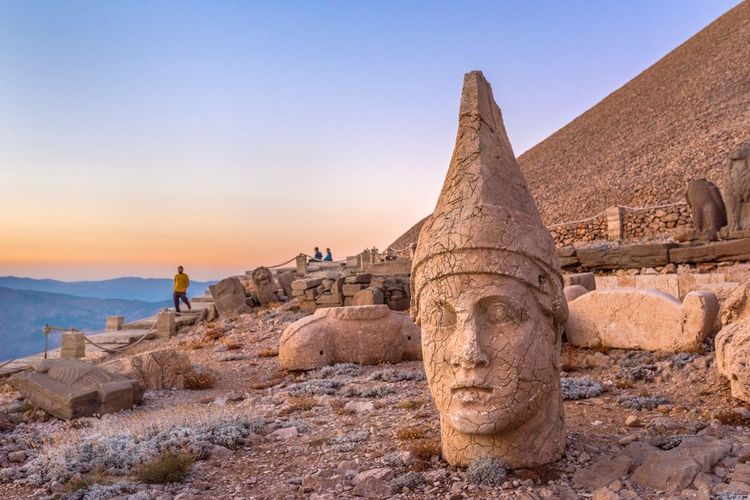
The Nemrut Dagi
- © burakguralp / ShutterstockNemrut Dagi, a mountain to bury a king
Let's take a step back in time: the Hellenistic period began with the death of Alexander the Great in the 4th century BC. Conqueror of the entire known world, the Macedonian had spread Hellenic culture to the ends of the earth. When he died, his immense empire was divided between his generals, the Diadochi, into a number of kingdoms, including the Seleucid kingdom occupying this part of Anatolia.
In the absence of a sufficiently charismatic leader, these Hellenistic kingdoms, where fusion with Persian culture was taking place, broke up into smaller entities, such as the kingdom of Commagene, which appeared in the 2nd century BC. A kingdom that would doubtless have been forgotten were it not for its ruler Antiochos I, who wanted to leave his mark long after his death by building a splendid funerary monument.
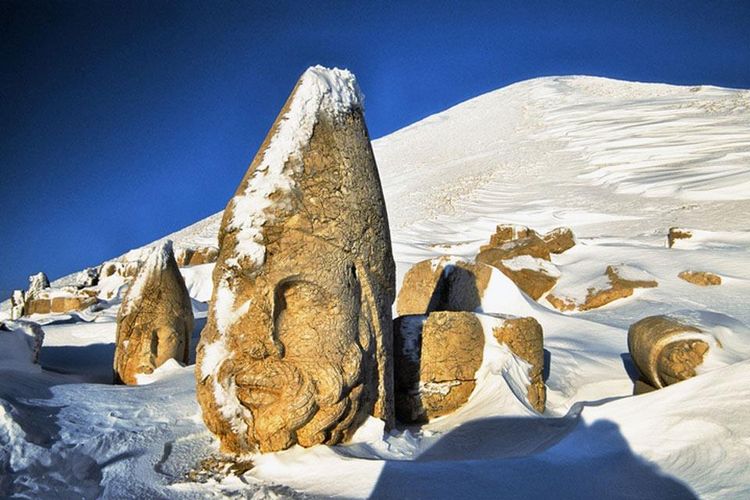
The site under the snow
- © Tolo Balaguer - age fotostockAt the summit of Nemrut Dagi, at an altitude of 2,200 metres, Antiochos I aimed high to get closer to the gods, whose equal he considered himself to be! This is how Antiochos came to be found among the giant statues guarding the site, in the company of Heracles, Apollo and Zeus himself.
An extraordinary archaeological site
A visit to the archaeological site of Nemrut Dagi promises to be one of the most memorable in Turkey. Discovered at the very end of the 19th century, it is now a UNESCO World Heritage Site.
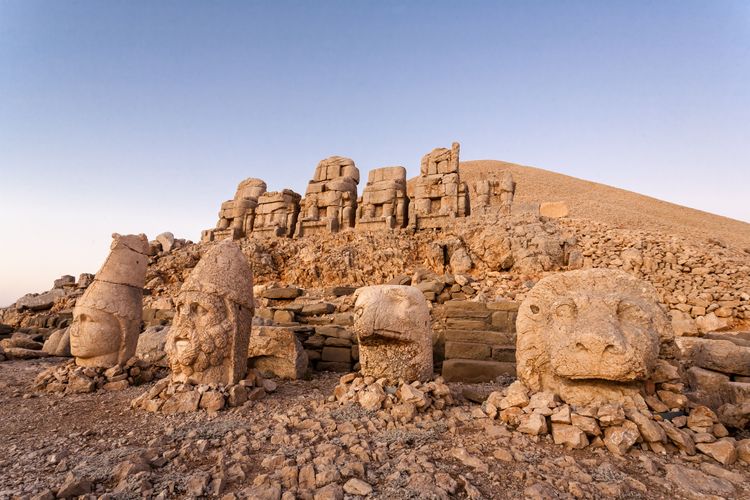
The statues of Nemrut Dagi
- © Alexander Ishchenko / ShutterstockAntiochos I thought big. The summit of the mountain was topped by a tumulus 150 metres in diameter and 50 metres high. Despite the excavations, the mystery of the entrance to the burial chamber remains unsolved... In fact, an almost supernatural aura emanates from the entire site, due in particular to the presence of the giant statues that have guarded the mausoleum for centuries. Some have been toppled over by earthquakes.
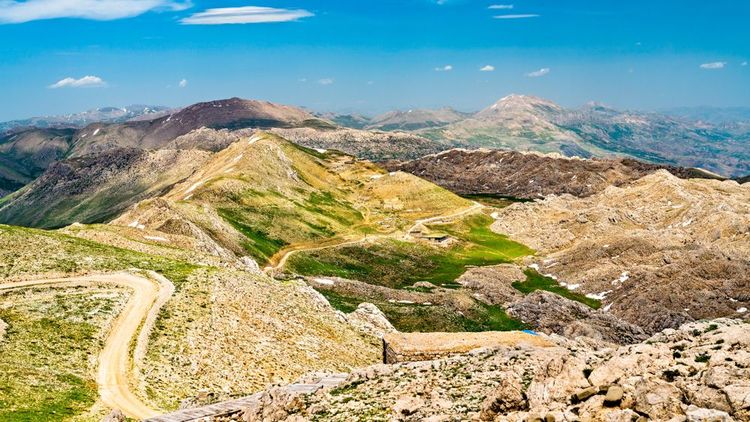
An exceptional panorama
- © Leonid Andronov / ShutterstockFive monumental statues face west, and five east, each series representing the same deities. These figures seem to indicate the two most spectacular times to admire the panorama offered from the Nemrut Dagi: sunrise and sunset, two (very) high points of the visit!
The view of the entire region, the course of the Euphrates and the mountains, some of them snow-capped, is a sight to never tire of. Let's hope Antiochos I didn't either!
👉 Practical information
Visiting the Nemrut Dagi site
- There are two options for visiting the site: by car on your own, or via an organised excursion offered by some of the hotels in the region (see below).
- The site is linked by a tarmac road that becomes a driveable track to the summit. Entrance costs 25TL.
- The best times to appreciate its beauty are at sunrise and sunset. There are often more people at sunset, which is guaranteed to be a magnificent spectacle.
- Nemrut Dagi is open all year round, but in winter the snow-covered road is sometimes closed.
The Nemrut Dagi: en route to Eastern Turkey
To discover Nemrut Dagi, you'll have to travel deep into austere Eastern Turkey, a succession of mountains and vast desert areas.
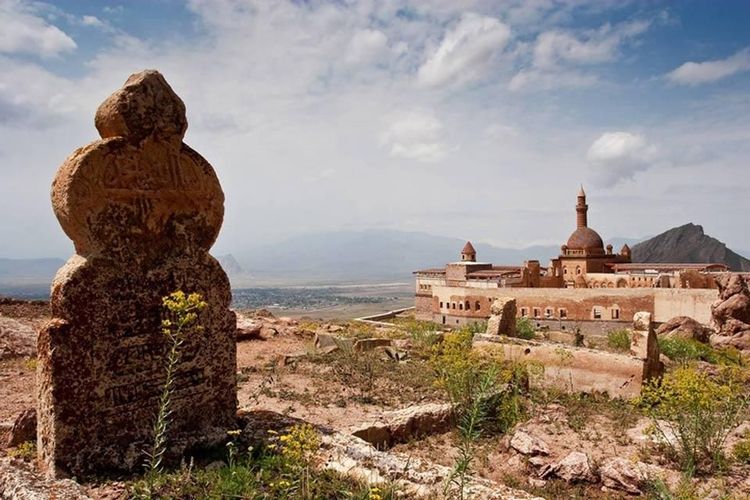
Eastern Anatolia offers spectacular desert landscapes
- © Roland et Sabrina MICHAUDLess travelled, Eastern Anatolia has a very authentic face and is already reminiscent of Central Asia as you approach Iran. It is home to magnificent monuments such as the Seljuk fortresses of Sivas and Divrigi, caravanserais, lost monasteries and, of course, the impressive mausoleum of Nemrut Dagi.
The region's tourist infrastructure is less well provided for than in western Turkey, but those who are not fussy about comfort will find something to suit them. Malatya is the nearest large town to Nemrut Dagi: it's a 2h30 drive to the site. Some hotels offer the excursion.
Movenpick Hotel Malatya
Hotel with indoor swimming poolAnother option is Khata, to the south of the mountain, a smaller town of little interest but closer to Nemrut Dagi, around 1 hour's drive away. Some hotels also offer organised excursions.
Komageneiz hotel
Hotel located in AdıyamanIf you're going to drive so far, you might as well take the time to explore the region and its natural and archaeological sites, and discover a completely different version of Turkey. But be warned: the area south of Nemrut Dagi is not recommended for tourists.
